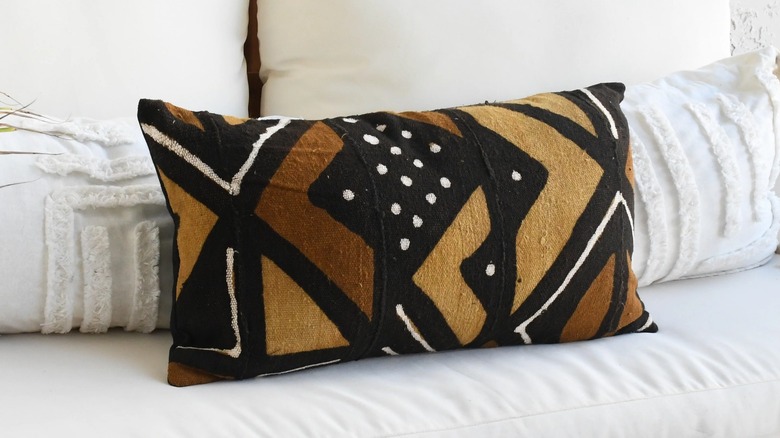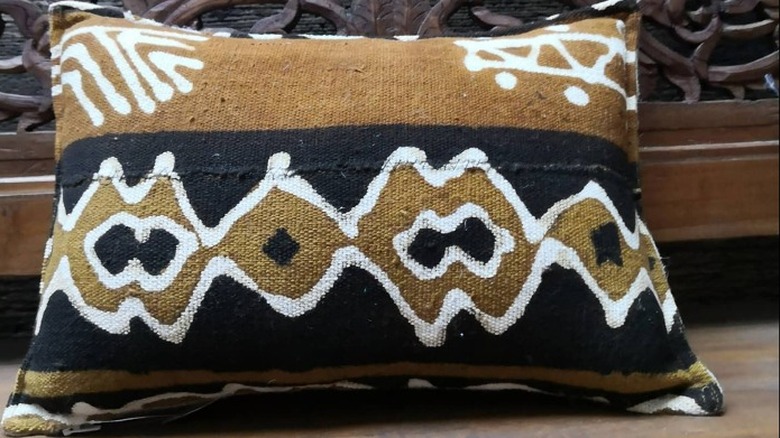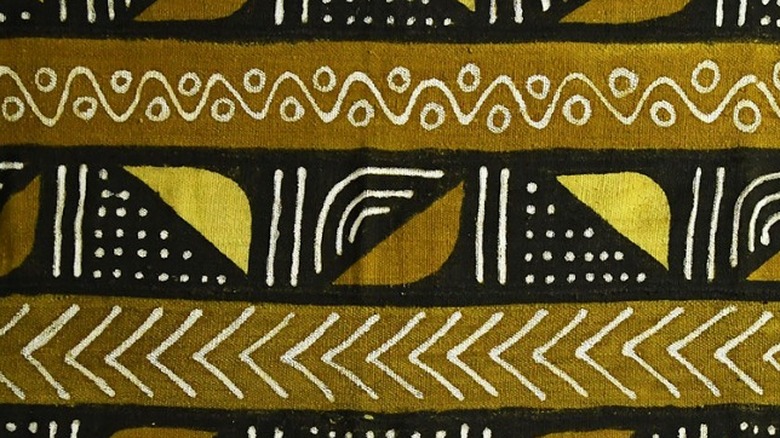What Is Mudcloth Fabric (And How To Care For It)
Mudcloth, also known as bogolan or bogolanfini, is a traditional fabric originating in West Africa. It is a handmade textile characterized by its distinctive patterns and earthy colors that are rich in cultural significance. The symbols can refer to stories, historical battles, mythology, and even West African proverbs. Oftentimes, pattern meanings are known only to small communities of people. Mudcloth is made using a labor-intensive process that involves weaving strips of hand-spun cotton and then dyeing them with plants and fermented mud and-or clay. The patterns on mudcloth are created by applying the mud or clay mixture with various tools, including brushes, twigs, feather quills, and with their fingers.
With its distinctive aesthetic appeal, mudcloth has gained global popularity since it was introduced to Western culture by designer Chris Seydou in the 1980s. It is now widely used in various forms of home decor, including throw pillows, wall hangings, and upholstery. In addition to its aesthetic and artistic worth, mudcloth carries deep cultural importance, serving as a means of communication and embodying symbolic identity. Given its delicate nature, mudcloth should be handled with care and washed using gentle and delicate methods.
How mudcloth is made and used
Creating mudcloth is a labor-intensive process and carries cultural symbolism, so patterns and processes may vary slightly from region to region and artist to artist. The process begins with locally grown cotton, which is woven into long, narrow strips called "finimougou" and then sewn together to create a larger fabric piece. The cloth is infused with a yellow-colored solution made from the leaves of the n'gallama tree, allowing it to absorb the earthy dye. Artists draw intricate designs using clays that are rich in iron oxide, and as the mud dries, the fabric absorbs the color.
After drying and washing to remove the excess paint, the process is repeated to get rich, intense colors. The fabric is then rinsed in the n'gallama tree solution to further enhance the colors. Lastly, caustic soda is applied to the unpainted areas. This final step actually highlights the skillfully painted patterns and symbols. Depending on the size and intricacies of the designs, it can take up to a month for the entire process.
How to care for mudcloth
Mudcloth is a delicate fabric, and improper handling may damage its intricate patterns or cause color bleeding. For this reason alone, machine washing is not recommended. Handwashing is the safest method to clean it. Fill a basin or sink with cold water and a mild detergent suitable for delicate fabrics. Gently agitate the fabric in the water without rubbing or scrubbing it, and then rinse it thoroughly with cold water. After washing, do not wring or twist the mudcloth. Instead, gently squeeze out excess water and lay it flat on a clean towel. Roll up the towel with the mudcloth inside to absorb excess moisture and then unroll it and lay it flat to air dry in a shaded area, away from direct sunlight.
If necessary, iron the mudcloth while it is still slightly damp. Set your iron to a low temperature and use a pressing cloth or a thin towel to protect the fabric. Avoid ironing directly on the mudcloth to prevent damage. For small stains or spills, gently blot the affected area with a clean cloth or sponge. Avoid rubbing the mudcloth vigorously, or else it may cause the colors to fade or the mud to flake off completely. It's worth noting that each mudcloth piece is unique and may have specific care instructions provided by the manufacturer or artisan. Always check any tags or care labels that are attached to the fabric.


